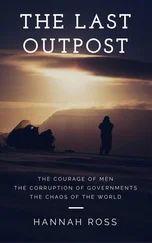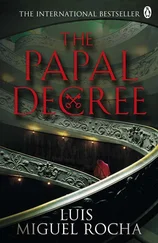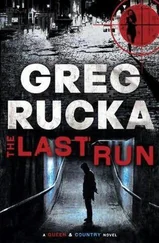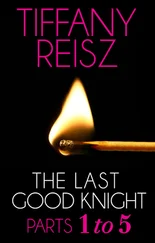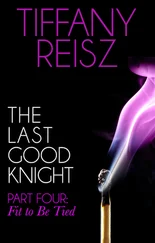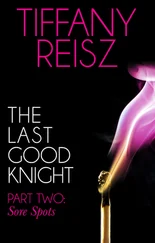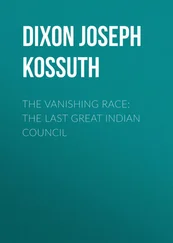Raul shot a surprised glance at Sarah.
“Of course not. The true third secret, which reveals the death of a man dressed in white at the hands of his peers.”
Some people thought that the third part of the secret of Fátima had not been published in its entirety. What Sister Lucía had written referred to an appeal by the Blessed Virgin Mary, who had warned, “Repent, repent, repent!” She had then seen a bishop dressed in white, which she identified as the Holy Father. She also saw other bishops, priests, monks, and nuns climbing a steep mountain, at the peak of which was “a great cross of rough beams, as if they were of cork oak, still with the bark on.” Before arriving at that cross, the pope, or the figure that Sister Lucía identified as the pope, went through a great city in ruins. The pontiff seemed to be “trembling, his gait unsteady, overwhelmed by pain and sorrow as he prayed for the souls of the corpses he found by the road.” The vision continued, always according to what the Vatican published, describing how the man dressed in white arrived at the mountain peak, knelt at the foot of the great cross, and was murdered “by a group of soldiers who shot him several times using guns and crossbows.” The prophetic vision concluded with the assurance that other bishops, priests, nuns, and monks died with him in the same way, including many men and women of different stations. Beneath the arms of the cross were two angels, according to Sister Lucía, each of them holding a large glass vessel in which they retrieved the martyrs’ blood.
Sarah was still thinking about her father’s story, trying to assess its consequences. Given the choice, she would prefer to keep it all hidden, never to be discovered by anybody.
“Then why did they bring that story out in 2000?”
“Because they had to think of something. And it was better to disappoint expectations than to say that the third secret predicted the murder of a pope by his own men.”
“Of course,” Sarah agreed, still holding on to a thoughtful attitude. “I imagine it can’t be easy to handle a revelation that way.”
“No, it isn’t. That’s why they waited so long before letting it be known. Then they prepared the 2000 event, very carefully staged. The faithful bought the goods, along with the unfaithful, and the case was wrapped up.”
Sarah’s wineglass was still untouched. Rafael’s, in contrast, was already empty.
“Why did those papers come out now? If he was murdered by the Vatican, why did they save those papers, instead of destroying them?”
“First, let’s make something clear. The Vatican, as an institution, had nothing to do with this. A group of men, even hiding beneath a habit or a red cap, do not amount to the whole Church. Today the Vatican continues to have undesirables, just as in 1978. The difference is that they aren’t so influential. Even though the Roman Curia is as conservative as it was then, the P2 doesn’t hold any power over it. It can’t manipulate conclaves or papal decisions. Certainly there are other organizations playing that role now, but we can’t be sure whether they are laundering money and producing false titles.”
“Manipulate conclaves? And the cardinals? And the Holy Ghost?”
“The only Holy Ghost I know is a bank,” her father wisecracked. “Clearly the conclaves are, above all, political events, subject to external influences and manipulations, like any human election. Until the beginning of the conclave, eligible cardinals carry out campaigns intended to produce the greatest possible number of votes. The Curia, supported by powerful organizations, elects its candidate, and when the cardinals enter the conclave, everything is practically decided.”
“Then, it’s all a farce?”
“Theoretically-the Church has various factions. The most conservative, represented by the Curia, and other, more liberal ones. Once one of these factions gains dominance, the other cardinals are pulled to it.”
“They follow the locomotive.”
“Yes, I suppose you could put it that way.”
“And that’s what happened in 1978?”
“No. The Curia didn’t succeed in securing the election of Cardinal Siri, their favorite. One faction of non-Italian cardinals gave its support to Albino Luciani. And that sealed his fate.”
Silence again for a moment. The captain then continued.
“In the second conclave in 1978, the ‘three-pope year,’ the Curia didn’t take any chances, and elected someone they would be able to control. It goes without saying that they hit the nail on the head. Not only did the Curia keep him under their control, but as pontiff he managed to establish an excellent relationship with the faithful. He was very useful to them.”
“I didn’t think of John Paul II that way.”
“Nobody does. But it’s difficult to blame him for it. First, because he received a very serious warning in 1981, when Mehmet Ali Agca tried to assassinate him. The original plan wasn’t to give him a scare, but to do away with him entirely. And later, because the Vatican, indirectly, put nearly a billion dollars into the coffers of Solidarity, the Polish labor union in Gdansk that overthrew their communist regime. They did it with funds from the Vatican and from the United States.”
“But you still haven’t answered my question. Why did the people who killed the pope not destroy those papers? That’s what I would have done.”
“Listen,” her father continued, “the pope didn’t die because of the papers in his hand. But someone immediately took care to remove them. That person gave them to the man in charge of the job, who took them out of the Vatican. The order was to destroy the papers, but he never fulfilled it.”
“Why?”
“Good question. Maybe so he could keep them for blackmail. Or even as a kind of ‘life insurance,’ in case the people on top wanted to get rid of him in the future.”
“I see,” Sarah said, nodding. “Then the time has come to explain the murder. Why did they kill the pope?”
“Are you going to drink your port?” Rafael asked unexpectedly, his voice absent for some time. Sarah looked at him.
“No,” she answered, holding out the glass. “Help yourself.”
“Thanks,” Rafael said, instantly taking it.
“I want to know who killed the pope and why,” Sarah continued. “And who is that Firenzi? I need to know how I fit into this whole business.”
“Forgive me for interrupting, Captain, but we should continue this conversation in the car.”
“What car? The one we drove here in?” the young woman asked.
“No, the one I’ve got outside,” her father explained. “How did you think we’d be leaving?”
“I don’t know. With him, anything’s possible,” Sarah answered, looking at Rafael. “But where are we going? Aren’t we safe here?”
“Yes. But very soon Mafra will be crawling with agents, and we can’t run the risk of being surrounded. It’s important to keep some maneuvering room, to stay always a step ahead,” Rafael explained.
“Do you really think they’ll manage to place us in Mafra?”
“Yes. Beyond the slightest doubt.”
The pope died because he knew too much,” Raul said, sitting in the passenger seat of the Volvo, looking back at his daughter. Sarah leaned forward in order to hear better. Rafael seemed focused on his driving. She surmised that he already knew the story her father was telling, and was absorbed in his own thoughts.
“Knew too much about what?”
“He knew that important figures in the ecclesiastical hierarchy, including his secretary of state, Cardinal Jean-Marie Villot, belonged to Masonic organizations, an offense subject to the automatic penalty of excommunication. He also came to understand that the Institute for Religious Works, the IOR-better known as the Vatican Bank-was directed by a corrupt man who, in collaboration with someone from the Banco Ambrosiano, laundered Mafia money and funds from other not-so-holy enterprises.”
Читать дальше

